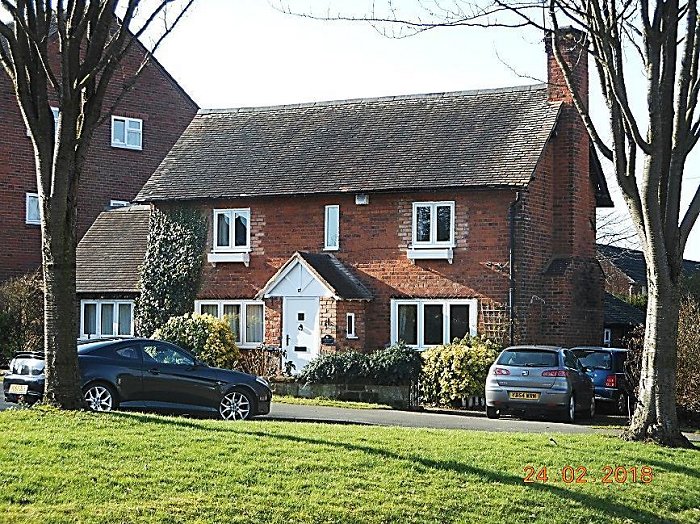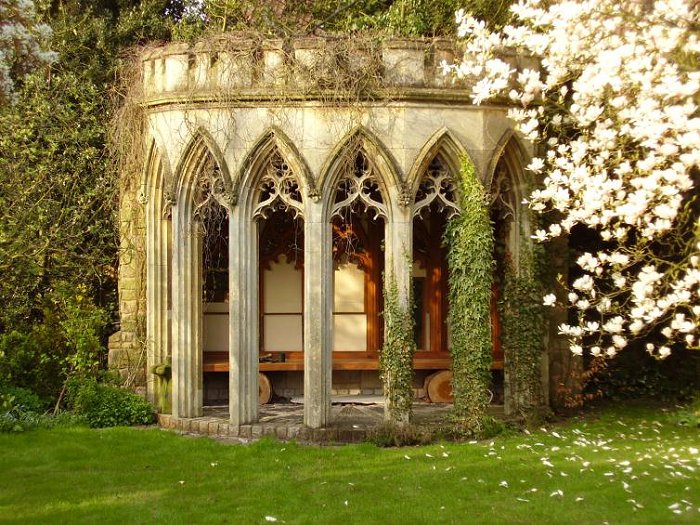|
Vestiges of the
Estate
There remain a few vestiges of this
remarkable estate: foremost of course is the lodge
described above but the home farm, minus its
outbuildings, still sits at an angle to Grange Road
having been built parallel to a rear entrance to the
estate: it was saved when the council estate was built
around it (not by Tarmac). There are many mature trees
remaining, mainly oaks, on the housing estates, together
with tree belts. The majestic curved avenue of mature
lime trees that led up to the side of the house. The
Fountain still survives in Corfton Drive, but perhaps
the most poignant survival is an old Mulberry tree at
the end of one of the culs de sac that may have been a
relic of the earlier house garden.

The Home Farm in Grange Road.
Without doubt much of the
attractive landscape character of this area of
Tettenhall is due to the foresighted tree planting
carried out by Theodosia, albeit for her own benefit at
the time. One of the more interesting relics is a huge
landscaped crater approximately 3-4 meters deep and 20
meters wide that occupies most of the rear garden of a
house at the end of Corfton Drive. This was popularly
believed to have been a bomb crater but is most likely
to have been a clay pit from which clay was dug for the
manufacture of bricks – it is shown on pre-war maps
surrounded by a circular fence. Nearby is a huge whitish
glacial boulder, not quite in its original position,
that was probably discovered when they were digging the
clay and was used as a geological feature in the
Woodhouse garden.
|

The Fountain. |
Various pieces of the
carved stonework from the house were
purchased and removed but most of it
remained unsold and was destroyed. The fine
gothic fountain from the garden of the Wood
House now stands in a field, opposite the
Hall in Acton Round, Shropshire, which also
has some of the windows built into garden
features. The fine traceried seven light
dining room bay window has been re-erected
as a folly in a garden in Tettenhall.
There are still some
estate stone boundary walls in existence:
that along a section of the Wood road
frontage was built in two stages. The three
feet high lower stage consists of random
rubble stone, but the four feet high upper
portion is built in coursed dressed stone of
better quality. The obvious inference is
that the lower portion of the wall was
already in existence when Theodosia built
her house and she then heightened it for
privacy, so the lower portion may date to
the enclosure of the common some twenty five
years earlier when Wood Road was
constructed. There are also substantial
remains underground. A few years ago, a
house in Woodcote Road was having an
extension built when the builders discovered
they were over the old cellars of the
Woodhouse, causing considerable additional
work and expense. |

The dining room bay window.

Wood Road boundary wall.
|